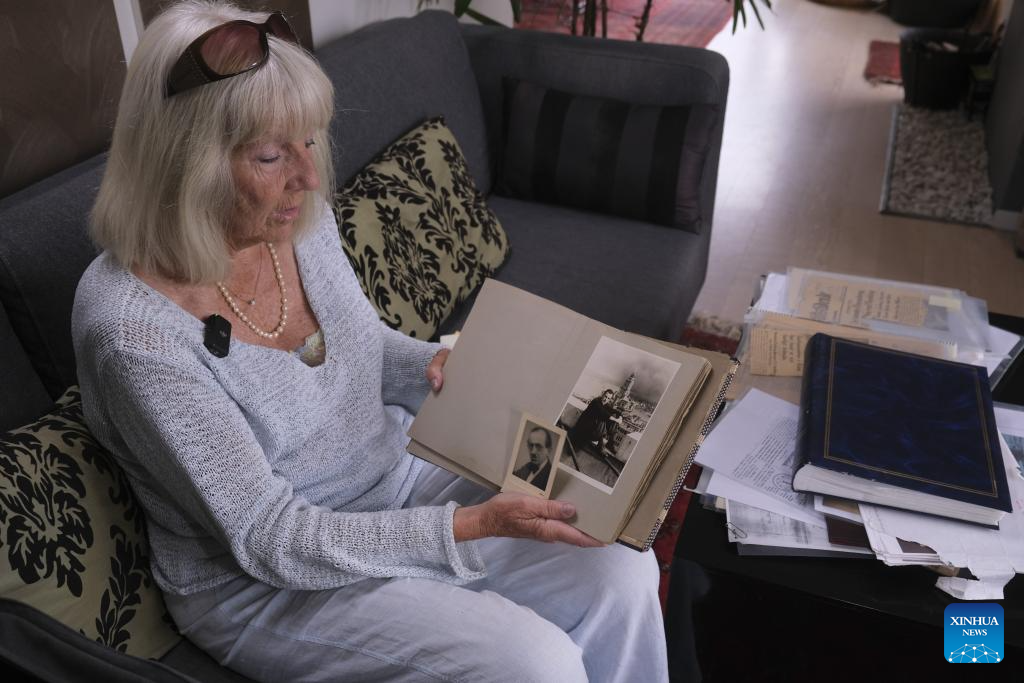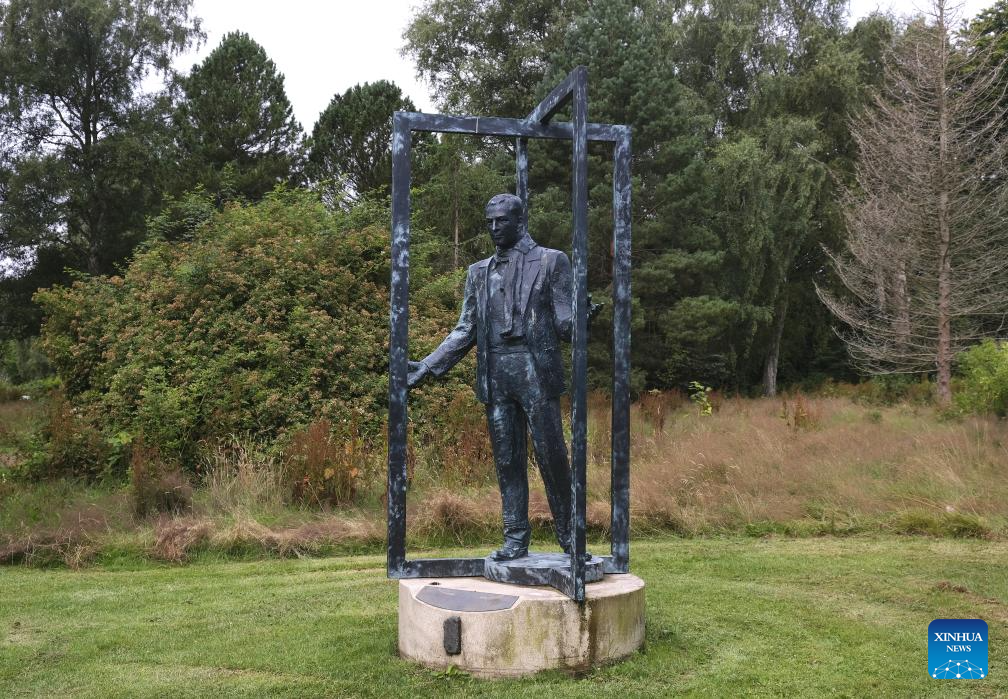


Mariann Stenvig Andersen, niece of Bernhard Sindberg and chairperson of the Sindberg Foundation, shows an album from Bernhard Sindberg during an interview with Xinhua in Aarhus, Denmark, on July 16, 2025.(Xinhua/Zhang Yuliang)
COPENHAGEN, Aug. 25 (Xinhua) -- In the quiet Danish city of Aarhus, a phone call from China this July reopened a chapter of history that has been cherished across continents for more than eight decades.
On the line was Huang Xinghua, whose mother Ai Yiying had survived the Nanjing Massacre thanks to the protection of a young Dane, Bernhard Arp Sindberg. During the winter of 1937-1938, Sindberg risked his life to shelter thousands of civilians inside a cement factory on the outskirts of Nanjing, China.
"My mother always said that without the Jiangnan Cement Plant and Mr. Sindberg, our family wouldn't have survived. We will always remember his life-saving kindness," Huang told Mariann Stenvig Andersen, Sindberg's niece and chairperson of the Sindberg Foundation.
COURAGE IN DARK TIMES
Sindberg, born in Aarhus in 1911, arrived in Nanjing in December 1937. Working as a watchman at the Jiangnan Cement Plant, built by Danish company F.L. Smidth, he suddenly found himself in the middle of one of history's darkest atrocities. Together with the German factory manager Karl Gunther, he opened the factory gates to terrified civilians fleeing Japanese soldiers.
For more than three months, the plant became a sanctuary for nearly 20,000 civilians. Sindberg, a young man of 26, stood guard at the gates, waving the Danish flag to deter intruders.
His niece recalls her uncle as "not tall, about 1.73 meters, but very strong," a former soldier with curly blond hair and a Nordic toughness that somehow made Japanese troops hesitate. "I still don't understand why they didn't kill him," Andersen said. "Maybe, as he said himself, he was just lucky."
Journalist Peter Harmsen, author of Bernhard Sindberg: The Schindler of Nanjing, describes how Sindberg would confront soldiers at the gate, sometimes carrying only a double-barreled shotgun and the Danish flag. "It seemed almost magical," Harmsen writes, "as if the flag itself forced the soldiers to step back, like demons confronted with a powerful spell."
Sindberg also bore witness. A gifted photographer, he captured haunting images of the massacre's aftermath. "It is a huge loss that he never wrote detailed memoirs," Harmsen told Xinhua. "He had both the eye of a photographer and the words of a journalist."
A LASTING LEGACY
Sindberg left Nanjing in March 1938, later settling in California, where he died in 1983. Yet in China, his legacy endured. In 1938, the Shanghai municipal government awarded him a medal, and a year later, grateful civilians presented him with a silk banner embroidered with the words 'acting bravely for a just cause.'
That banner, once gifted by Sindberg to his niece, is now preserved at the Memorial Hall of the Victims in the Nanjing Massacre by Japanese Invaders. Andersen said donating it was her way of honoring both her uncle and the Chinese people. "Since the Chinese commemorate my uncle so sincerely every year, I felt I should do something too," she said.
In Aarhus, Sindberg's hometown, a statue stands tall in Marselisborg Memorial Park, a gift from Nanjing and unveiled in 2019 by then-Queen Margrethe II.
REMEMBERED AS A FRIEND
This August, an exhibition titled "My Friend: Bernhard Arp Sindberg" opened at the China Cultural Center in Copenhagen, curated by students from Nanjing University.
"His courage, wisdom, and kindness deeply inspire our students," said Chen Min, director of the university's German Department. "To them, he is not only a friend but also a role model."
Sindberg's half-brother Ole attended the opening. "Bernhard never knew during his lifetime that his actions in Nanjing would be remembered like this. If he could see this today, I believe he would be proud," he said.
For decades, Sindberg was little known in Denmark, despite being revered in China. Harmsen's book has helped revive his memory at home.
"Sindberg was an average person in most ways," Harmsen noted. "But he managed to rise to the occasion and act ethically and heroically at a decisive moment in history. His story has universal appeal because it shows that one individual can make a difference, even in the face of overwhelming circumstances."

This photo taken on July 17, 2025 shows a statue of Bernhard Sindberg in Marselisborg Memorial Park in Aarhus, Denmark.(Xinhua/Zhang Yuliang)
点击右上角![]() 微信好友
微信好友
 朋友圈
朋友圈

请使用浏览器分享功能进行分享
